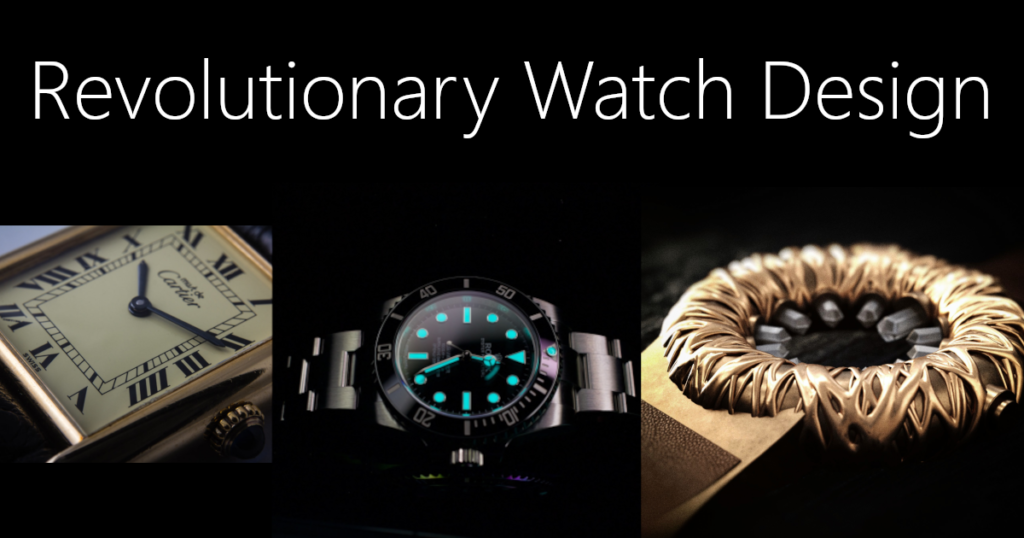
The image above shows our Tropical Crystal watch on the right.
Sections of this article.
- The Main Revolutions in Early Timepiece Design
- Revolutionary Watch Design: the Most Significant Revolutions in the History of Watch Design
- What Makes a Watch Revolutionary?
- Microbrand Innovators, Pushing the Boundaries of Watch Design.
- Watches with Ground-breaking Visual Design
- The Thousand-year Revolution in the Western Art Tradition, That No-one Knows About.
- UnconstrainedTime: Why We’re a Revolutionary Microbrand
Introduction
This article explores revolutionary watch design, starting with ground-breaking timepieces and watches, looking at how revolutionary each one really was, and what makes a watch revolutionary.
Then I look at revolutionary microbrand watches, and timepieces with ground-breaking visual design, followed by the little known and controversial concept of the biggest revolution in the Western Art Tradition and exactly why that is relevant to the continually evolving history of watch design, and how our own UnconstrainedTime brand can be seen as part of that little-known but extremely significant revolution.
Note . . . I only use watch images with permission from the watchmaker (unless the photos are public domain or creative commons), so some of the watches I present here might be lacking an image.
The Main Revolutions in Early Timepiece Design
To understand revolutions in watchmaking, I first need to explain to you the context within which the watch itself was a very significant revolution. So here I look at the ground-breaking innovations in timepiece history which led up to the invention of the watch.
The evolution of timepieces showcases a remarkable journey of human innovation, from the ancient sundials to the cutting-edge smartwatches of today. Each revolution in design represents not only advancements in technology but also societal shifts and changing preferences in fashion and functionality.
Sundials:

Among the earliest timekeeping tools, dating back thousands of years, sundials used the position of the sun’s shadow to indicate time. Their design varied across cultures, from the Egyptian obelisks to the Greek hemispheres. Revolutionary due to their simplicity, sundials were fundamental in forming the concept of dividing the day into hours.
Water Clocks (Clepsydra):
Water clocks appeared in ancient civilizations like Egypt, China, and Greece. These devices measured time based on the regulated flow of water from one container to another. They were revolutionary for their accuracy in measuring time at night, overcoming the sundial’s main limitation. Water clocks played a crucial role in early astronomy.
Candle Clocks:

Used in various ancient cultures, candle clocks employed marked candles or rods that burned at known rates, indicating the passage of time. As the candle burned, the marked sections denoted specific time intervals. These clocks had advantages of being portable and practical but had limitations due to variations in candle wax and wind conditions. Useful but not really revolutionary.
Astrolabes:

These were intricate devices used for solving various astronomical problems and measuring time based on celestial movements. Originating in ancient Greece and further developed in the Islamic world during the Middle Ages, astrolabes were pivotal in celestial navigation, improving time measurement accuracy and aiding in astronomy. These ancient timepieces laid the foundation for modern clock technology and our understanding of time.
Hourglasses:

While they might have been used earlier, the first clear evidence of them being used is in 1338, because one was depicted in a painting at that time by Ambrogio Lorenzetti, illustrating the concept of warning us that the sands of time were running out. They were ground-breaking in their ease of manufacture compared to other options at the time. They are also unusual as the only non-metallic timepiece still being used recently (for cooking).
Mechanical Clocks, Medieval Ingenuity:

Emerging in the Middle Ages, mechanical clocks were a significant leap forward in timekeeping technology. The earliest known mechanical clocks, such as European cathedral clocks (the oldest clock that is still working is depicted above), were massive structures installed in public places, employing gears, and weights to regulate movement and time display. They revolutionized urban life by enabling standardized timekeeping and aiding in religious practices, commerce, and science, shaping urban life and scientific advancements.
The invention of the escapement mechanism by European clockmakers in the 13th century significantly enhanced accuracy, enabling the gradual miniaturization of clocks, which resulted in first portable clocks in the 16th Century, which can be seen as being the original type of watches, after which pocket watches were developed.
Revolutionary Watch Design: the Most Significant Revolutions in the History of Watch Design
The evolution of watches spans centuries, witnessing remarkable revolutions in design, craftsmanship, and technology. From the traditional mechanical timepieces of yesteryear to the sophisticated smartwatches of today, the world of watchmaking has seen several transformative revolutions that have shaped the industry and our relationship with time, playing an important role in the transformation of societies (which I look at in this blog post about watch history). Here are notable examples of revolutions in watch design that have left a lasting impact on horology and society.
Pocket Watches: Portable Precision
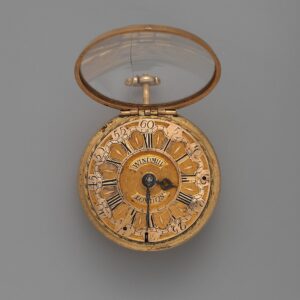
With advancements in miniaturization and craftsmanship, pocket watches emerged during the 16th century. These small, portable timepieces marked a shift from cumbersome, semi-portable clocks, to more convenient personal accessories. Pocket watches became a symbol of status and craftsmanship, often adorned with intricate designs and made with precious metals. They were crucial for individuals who required precise timekeeping on the move.
Mechanical Movements: The Foundation of Watchmaking

Mechanical watches, with their intricate gears and springs, represent the foundation of watchmaking. Innovations like the escapement mechanism and the balance wheel enabled watches to increase their accuracy, setting the stage for centuries of mechanical watch craftsmanship. Accuracy was improved by innovations, and much sought after for the needs of the time, especially for navigation out of the sight of land (as detailed in our blog post on watch history).
Mass Production and Industrialization: The Birth of Wristwatches
The industrial revolution in the 19th century brought about significant changes in watch production, including making them more commonly available. You might like to read more details about this fascinating subject on our blog post: Wristwatches: History And Development, And How They Relate To Society.
Wristwatches: The Utility Revolution
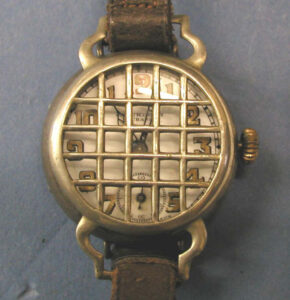
The transition from pocket watches to wristwatches in the late 19th and early 20th centuries (although they had been available for this, mainly as inaccurate ornamental items for women) marked a significant revolution in timepiece design. Initially considered a novelty, wristwatches gained popularity during World War I when officers found them essential for synchronizing manoeuvres.
This shift to the wrist transformed timepieces from luxury accessories to essential tools for everyday life, revolutionizing the way people wore and interacted with their timepieces.. They were issued to all soldiers by the end of the war, being so much more convenient that pocket watches during the heat of battle, and became popular with the public after that. With advancements in manufacturing techniques and standardized parts, companies like Patek Philippe and Rolex pioneered the creation of smaller, more wearable wristwatches.
Water-Resistant Watches: Enhancing Durability
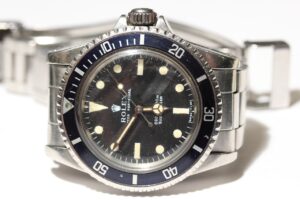
A pivotal moment in watch design occurred with the introduction of water-resistant watches. In the 1920s, Rolex developed the Oyster case (shown above), a sealed and waterproof housing for their watches, enhancing their durability and reliability. This innovation paved the way for dive watches (still a popular type of watch today, even for people who’ve never used them for the intended purpose), enabling wearers to explore underwater while maintaining timekeeping accuracy.
Quartz Revolution: Precision and Accessibility
The quartz revolution of the 1960s and 1970s brought about a seismic shift in the watch industry. Quartz watches, utilizing electronic movements powered by quartz crystals, offered unparalleled accuracy and disrupted the dominance of traditional mechanical watches and of Swiss watchmaking. These new watches were more affordable, mass-produced, and required minimal maintenance, making accurate timekeeping accessible to the general public for the first time.
Digital Watches: Technological Integration

The introduction of digital watches in the 1970s represented a significant new direction in timepiece design. These watches replaced traditional analogue dials with digital displays, offering features like alarms, stopwatches, and even calculator functions. Their integration of technology made them popular among various demographics once the price came down from the initial pieces, setting the stage for further advancements in wearable tech.
Smartwatches: Using Technological Advances in Daily Life
The advent of smartwatches represents a contemporary revolution in watch design. Integrating digital technology with traditional watch elements, smartwatches offer functionalities beyond timekeeping such as tracking fitness, providing notifications, and offering connectivity with smartphones, catering to modern lifestyles and tech-savvy consumers.
Each revolution in watch design reflects not only technological advancements but also shifts in societal needs, fashion trends, and craftsmanship. These milestones showcase the resilience and adaptability of the watchmaking industry, continuously evolving to meet the demands of changing times.
What Makes a Watch Revolutionary?
A revolutionary watch is not merely a marvel of engineering; it’s a testament to visionary design, ground-breaking technology, and cultural significance. From the early mechanical marvels to today’s high-tech smartwatches, several key elements contribute to what makes a watch truly revolutionary:
Innovative Technology:
Some watches are revolutionary because of cutting-edge technology. The evolution of timepieces from traditional mechanical movements to quartz precision, through digital displays, and now to smart functionalities has reshaped the industry. Revolutionary watches often introduce ground-breaking mechanisms or materials that redefine accuracy, durability, or functionality. For instance, the introduction of the quartz movement at the end of the 1960s drastically enhanced accuracy and affordability, democratizing precise timekeeping.
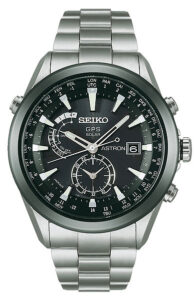
The first publicly available quartz watch was the Seiko Astron (above) at the end of 1969. Then several watchmakers showcased their first quartz watches at the Basel Fair in 1970.
Design and Aesthetics:
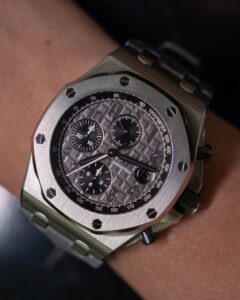
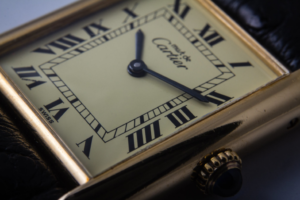
A watch can be revolutionary because it represents a departure from conventional design. Iconic watches often carry distinctive aesthetics that challenge norms and set new trends. The Audemars Piguet Royal Oak (above, left), with its octagonal bezel and integrated bracelet, revolutionized luxury sports watch design in 1972. Similarly, the Cartier Tank (above, right), with its rectangular shape inspired by military tanks, redefined elegance in watchmaking. We’ll look into ground-breaking visual aspects of watch design in more detail, below. For watches with unusual aesthetics, see our blog post on creative watch design
Cultural Impact:
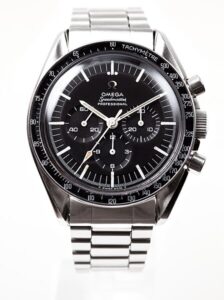
Beyond technical prowess and design aesthetics, a truly revolutionary watch often has cultural significance. It might mark historical events, embody societal shifts, or symbolize a particular era. For instance, the Omega Speedmaster (above) gained legendary status as the first watch worn on the moon, during the Apollo 11 mission. Its association with space exploration elevated its status beyond being a timepiece, becoming a cultural icon.
Functional Innovations:
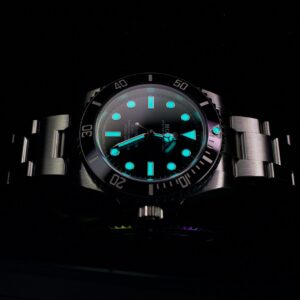
Revolutionary watches often introduce new functionalities or features that transcend basic timekeeping. Complications like chronographs, tourbillons, or perpetual calendars demonstrate the pinnacle of watchmaking skill. The Rolex Submariner (above), designed for diving, introduced waterproof features and a rotating bezel for measuring dive time, setting new standards for sports watches.
Craftsmanship and Materials:
The use of innovative materials and exceptional craftsmanship distinguishes some revolutionary watches. Whether it’s the intricate engravings on a classic Patek Philippe or the high-tech ceramic or 3D printed cases on some modern timepieces, craftsmanship can elevate the watch to something more. The introduction of new materials like carbon fibre, ceramic, or titanium has pushed boundaries in durability and aesthetics.
A great example of use of new materials is the first watch detailed in this section of another of my blog posts, on how practicalities shaped watch aesthetics, which uses both ceramic and titanium.
Disruptive Market Impact:
Revolutionary watches often disrupt the market, challenging established norms and changing consumer expectations. The introduction of quartz timing at the end of the 1960’s had such a significant impact on the market, that the era was known as the “quartz crisis”, reshaping the entire watch industry.
Another example is the Apple Watch, with its fusion of technology and horology, which revolutionized the industry.
Legacy and Longevity:
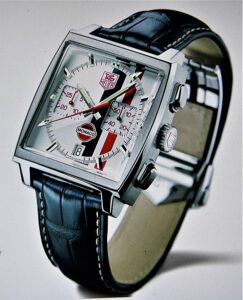
A truly revolutionary watch stands the test of time, leaving a lasting legacy that transcends generations. Timepieces like the Rolex Datejust or the TAG Heuer Monaco (above), linked to iconic personalities and historical moments, continue to captivate enthusiasts decades after their inception and have a significant influence on nearly all watch design (with one brand being a notable exception, which we’ll examine below).
Microbrand Innovators, Pushing the Boundaries of Watch Design.
Microbrand watches have significantly impacted the watch industry, bringing innovation, creativity, and unique designs to the forefront. These independent watchmakers, often smaller in scale compared to major brands, have carved a niche for themselves by challenging traditional norms and offering distinctive timepieces. Here, I delve into several examples of revolutionary microbrand watch designs and explore the story and concepts that set each one apart in their quest for innovation.
Horage Autark Collection: Precision and Customization
The Horage Autark collection stands out for its innovative modular design. These Swiss-made watches offer a level of customization rarely seen in the industry. The revolutionary aspect lies in its interchangeable components, allowing wearers to modify various aspects of the watch, including the case, bezel, dial, and even the movement. This level of personalization empowers users to create a truly unique timepiece, redefining the relationship between watchmakers and consumers.
Nodus Retrospect: Modern Vintage Appeal Nodus,

. . . a microbrand recognized for its great value and design aesthetics, introduced the Retrospect model, blending vintage-inspired design with modern functionality. The Retrospect pays homage to classic mid-century dive watches while incorporating contemporary materials and manufacturing techniques. It stands out for its balance between nostalgia and innovation, offering a unique take on the timeless appeal of vintage watches.
Farer Universal GMT: Vibrant Aesthetics and Functionality:
Farer, a British brand is known for its bold use of colours and distinctive designs. The Farer Universal GMT collection, in particular, stands out for its vibrant and eye-catching dials combined with practical GMT complications. These watches capture attention with their unique colour combinations and intricate detailing, catering to individuals seeking a watch that stands apart in both appearance and functionality.
Sinn 556 I: Technological Innovation:
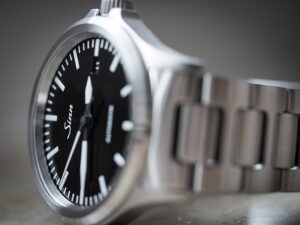
Sinn, although not a conventional microbrand, is recognized for its innovative approach to watchmaking. The Sinn 556 I model (above) exemplifies the brand’s commitment to technological advancements. This timepiece features a hardened steel case and Sinn’s proprietary technology such as Tegiment, providing exceptional scratch resistance. Additionally, the use of a copper sulphate capsule to absorb moisture within the watch showcases their dedication to functional innovation and durability.
Laco Squad Watches: Contemporary interpretations:

The traditional brand Laco, renowned for its pilot watches, offers a range of Squad watches (their “Ocean” is shown above, developed with the German Army) that blend classic aesthetics with contemporary elements. These timepieces reinterpret traditional pilot watch designs with modern sizing, materials, and functionalities. Laco’s commitment to maintaining the essence of historical pilot watches while adapting them to suit modern preferences marks a revolution in preserving heritage while embracing innovation.
Zelos Mako V3: Material Experimentation and Craftsmanship
Zelos gained attention for its Mako V3 model, showcasing the brand’s dedication to material experimentation and craftsmanship. The watch features a unique bezel made from Damascus steel, a material renowned for its intricate patterns resulting from forging different steel alloys. The Mako V3’s use of exotic materials and meticulous craftsmanship appeals to collectors seeking distinctive and visually captivating timepieces.
Undone Urban Vintage: Customization and Personalization
Undone revolutionizes the concept of customizable watches with its Urban Vintage collection. These watches allow buyers to tailor nearly every aspect, from the dial design and case finish to the choice of hands and straps. The brand’s online platform provides an interactive experience, enabling customers to create highly personalized timepieces that reflect their individual style and preferences.
What sets these microbrand watches apart is their commitment to pushing boundaries, whether through customization, innovative materials, technological advancements, or a unique blend of vintage aesthetics with contemporary elements. These independent watchmakers do what microbrands are best at, which is to challenge established norms, catering to a growing audience seeking watches that not only tell time but also tell stories of innovation, individuality, and artisanal craftsmanship. The combination of distinct design philosophies and innovative approaches makes each of these microbrand watches truly revolutionary in their own right.
We’ll look at our own microbrand below, explaining why we’re more revolutionary than most.
Watches with Ground-breaking Visual Design
Revolutionary watch design aesthetics have transformed the industry, introducing innovative approaches that challenge traditional norms and redefine the boundaries of horological beauty and functionality. Throughout the history of watchmaking, several timepieces stand out for their pioneering visual designs and ground-breaking aesthetics, setting new standards in craftsmanship and style.
In 1904, pioneering Brazilian aviator Alberto Santos-Dumont needed to be able to see his watch without letting go of the controls with his hands in order to time his performances. He asked Cartier to find a way to create a watch for his needs, and they designed one to be worn on the left wrist, with what are now called lugs to hold the strap to the case and a clasp to hold it firmly (unlike a slip-on women’s bracelet), and a winding mechanism on the right. They named the model the “Santos”:
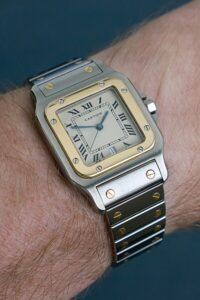
. . . and it has been the basis of the majority of wristwatch designs since that time.
Design and Style: Avant-Garde and Fashion Influence
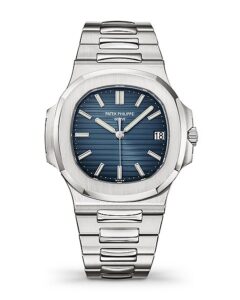
Beyond technological advancements, revolutions in watch design also encompassed aesthetic innovations. Designers like Gerald Genta revolutionized the industry with iconic timepieces such as the Audemars Piguet Royal Oak and Patek Philippe Nautilus (above). These watches introduced unconventional designs, blending luxury with sportiness, setting new standards in high-end watchmaking. Read about their watch design inspirations here.
Audemars Piguet Royal Oak: Iconic Luxury Sports Watch

The Audemars Piguet Royal Oak (above), designed by Gerald Genta in 1972, revolutionized the concept of luxury sports watches. Its octagonal bezel, exposed screws, and integrated bracelet defied conventional design norms. This stainless steel timepiece, with its intricate finishing and attention to detail, redefined luxury while bridging the gap between sports and haute horology.
Rolex Submariner: Archetype of Dive Watches

The Rolex Submariner (above), introduced in 1953, redefined dive watch aesthetics. Its enduring design features a unidirectional rotating bezel, luminous markers, and a robust construction, setting the standard for functionality and durability in dive watches. The Submariner’s timeless design has influenced countless iterations of dive watches across various brands.
Richard Mille RM 011: Avant-Garde Horology
Richard Mille’s RM 011 exemplifies avant-garde design with its unconventional tonneau-shaped case and highly technical construction. The watch features intricate skeletonization, showcasing the movement’s inner workings, and utilizes cutting-edge materials like titanium and carbon nanofibers. Its futuristic aesthetic reflects a bold departure from traditional watch designs. Another of his watches features in our blog post on unusual watches.
Cartier Tank: Timeless Elegance

The Cartier Tank, introduced in 1917, when the first military tanks were still revolutionary, having been only introduced the year before, embodies timeless elegance with its rectangular case and distinct Roman numeral dial. Its clean lines and classic design have made it an enduring icon in the world of horology. The Tank’s sophisticated aesthetic continues to captivate watch enthusiasts more than a century after its creation.
Devon Watches Tread 1: Revolutionary Time-display.
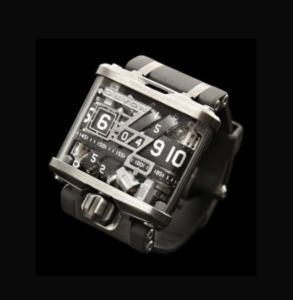
The Devon Tread 1 (above) uses a patented system of interwoven time belts to display the time. While not a mechanical watch in the traditional sense, because it uses an electronic microcontroller and a rechargeable battery instead of a spring for power, it is still very much a fascinating and visually stunning innovation in mechanical time-display, as well as using aerospace-quality materials, and is well known by any enthusiast of contemporary watches. They are a great example of innovative engineering resulting in aesthetic watches.
Another fascinating example of a revolutionary watch is “Genesis” by H. Moser and Cie. I explain in detail why this is an example of algorithmic watch design, here.
These revolutionary microbrand timepieces exemplify a diverse range of design philosophies, from sleek elegance and functional minimalism to avant-garde innovation. They have transcended their eras, leaving an indelible mark on watch design and inspiring future generations of watchmakers, serving as enduring symbols of creativity and craftsmanship within the world of watches.
While on the subject of watches with ground-breaking visual design, a fascinating related question I explore, is: “Are watches art?“
For more examples of ground-breaking visual design, see our blog post on creative watch design. Another perspective on these watches is to see them as examples of mathematical art, since engineering is all about mathematics, and nowadays often used specifically for its aesthetic impact.
The Thousand-year Revolution in the Western Art Tradition, That No-one Knows About.
This section of the article might, at first glance, seem not to have an obvious relevance with the topic in hand, but bear with me and it will become clear how this relates to one of the most significant of all revolutions in timepiece design . . .
Most people have some awareness of the main revolutions in visual arts over the last few hundred years that have reshaped artistic expression, challenged conventions, and influenced cultural perceptions.
These ground-breaking milestones include the Renaissance, with artists like Leonardo da Vinci, Michelangelo, and Raphael ushering in a renewed focus on humanism, scientific inquiry, and realistic representation.

Later art movements like impressionism (exemplified by Monet’s water-lilies, above), cubism (from artists like Pablo Picasso and Georges Braque) and surrealism from Salvador Dalí and others, pushing the boundaries of creativity beyond rationality, and are all well-known as being revolutionary in their times.
And most people know of some of the major changes in music over the centuries, such as the development from Medieval chant to polyphony, expanded in the Baroque era by composers like Bach and Vivaldi, the beginnings of the symphony from Mozart and Haydn in the classical era, the more emotional expressions by masters like Beethoven and Chopin in the romantic era, followed by 20th Century experimentation and the broad popularity of jazz, rock and pop.
Not many people really appreciate how revolutionary some of the moments actually were at the time. What now seems like easily acceptable music was once dramatically revolutionary. For example, during the first performance of Wagner’s “Tristan und Isolde”, many of the audience stood up, booed and walked out, because it challenged the limits of acceptability so powerfully (with a succession of unresolved diminished-fifth chords).
By Far the Biggest Revolution in the Western Art Tradition
What far fewer people understand is that the whole of the thousand year evolution of the Western Art Tradition (which includes both music and the visual arts) can be seen clearly as one big revolution, with its fascinating climax, shifting from an overarching accepted convention to a whole new conceptual space, occurring in the early decades of the 20th Century.
Until recently, the whole development of the Western Art Tradition focused on a specific type of symbolization. In music this means notes, and in visual arts, this means depicting recognizable items (people, animals, landscapes etc.).
The whole millennium of Western music can be seen as a progression from the simplest mathematical relationships between notes, through more and more complex relationships, to the biggest revolution of all which is the development beyond notes, to music based on sounds themselves, which are vastly more complex, which is the ambient revolution.

The same revolution is seen in the visual arts at around the same time with abstract art (such as the Rothko, above), which is the same conceptual leap forward, of transcending the focus on symbols (all art before abstraction was about things which there are simple words for, and words are symbols for reality).
It can also be seen in the transition from fine jewellery (which is very much focused on simple, symbolic, perfect shapes) to art jewellery which often uses the fractal complexity of rough, broken surfaces and realistic rather than symbolized organic forms:
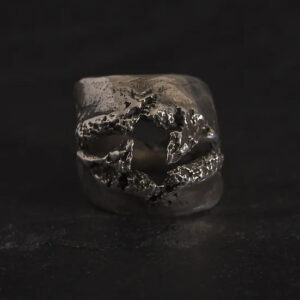
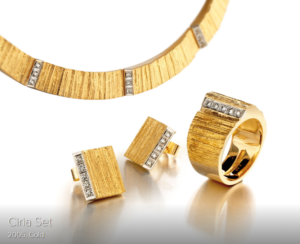
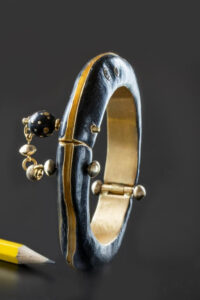
The world of horology is being influenced to some degree by the same revolution . . . it looks to me that it was inevitable that art jewellery watches would develop at some point.
Early watches were advertised by their mechanical properties, such as accurate movements or 14k gold. Now, some watches are being described as if they embody the concepts of art, such as being created by an individual and focusing on exploration and abstract concepts, which relates in interesting ways to the fascinating question: “are watches art?“. More on the relationship between art jewellery and watchmaking, here.
Watches based on what could be called conceptual art jewellery, are what UnconstrainedTime, as a brand, creates, and we are the first brand to be doing so . . .
UnconstrainedTime: Why We’re a Revolutionary Microbrand
There are many innovative, individual and unusual watches these days. In some ways their looks can certainly be described as revolutionary, but from a wider view, their main influences are still the same as with other watches, which are mechanical engineering design and fine jewellery, both of which can be seen as being about functionality rather than aesthetics, and relate to mass-production. Not that there’s anything wrong with that, of course.
Even with some of the most visually stunning recent watches, like the Devon Tread 1 mentioned above and the Urwerk UR-210, the majority of the visual influences are still obviously mechanical design and/or fine jewellery, even though they are pushing the boundaries of the watchmaking tradition.
There are already a few watches with some degree of art-jewellery influence.
UnconstrainedTime is the first watch microbrand firmly based on conceptual-art-jewellery concepts. Reasons for this definition include our use of non-symbolized organic forms, rough, grainy textures such as blackened silver and areas of unpolished 3D printed metal, and how little influence our watches have from fine jewellery and engineering (partly due to my background in fine arts and contemporary music rather than watchmaking).
Our watches have a very fundamental link with horology, as they use a simple 12-point time-display based on the concept of 12 hours per day, originating in the ancient Near East .Our watches are a synergy of art and horology . . . they truly meet the definition of art.
Whether this makes them revolutionary is not for me to say. What do you think, and why?
You can see these factors for yourself in our watches:
What do you think? Our community platforms allow owners to share experiences, creating a collective narrative around these artistic expressions. Every UnconstrainedTime piece becomes part of a shared journey—connecting collectors who recognise that true artistic innovation transcends conventional categories.
We’d love to hear your feedback on our watches, as well as this article.
P.S. We will be launching with a watch that has an additional claim on being revolutionary, as almost certainly the first ever 3D fractal watch . . .
Don’t miss our launch!
. . . subscribe now to receive notifications and for early access to our small, numbered releases, exclusive creator insights, and behind-the-scenes glimpses of our artistic process before they’re shared anywhere else.
Which watch do you think is the most revolutionary watch ever made? Let us know your opinion in the comments below or in our social media.
Author: Chris Melchior

This article was authored by Chris Melchior, founder of UnconstrainedTime and creator of the original range of wrist-worn sculptures of this unique artistic adventure.
Chris has extensive knowledge and experience of creativity, including fine art and cutting-edge contemporary music composition, and was awarded a First Class Honours Degree in fine art and music with a minor in philosophy.
Chris’s life-long artistic obsessions include organic forms and textures, abstraction, fractals, and the aesthetic essence of musical genres.
He has developed unusually deep insights into the elemental concepts underlying areas including Eastern and Western philosophies, science and technology, creativity and the arts, as well as empirical spirituality in which he is acknowledged as a leading authority.
He has a profound fascination and love for the unique and synergistically creative combination of fine art with the ancient essence of time-keeping which evolved into the UnconstrainedTime project.


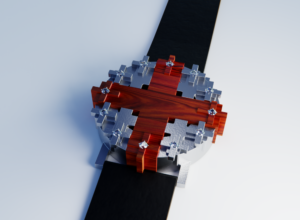
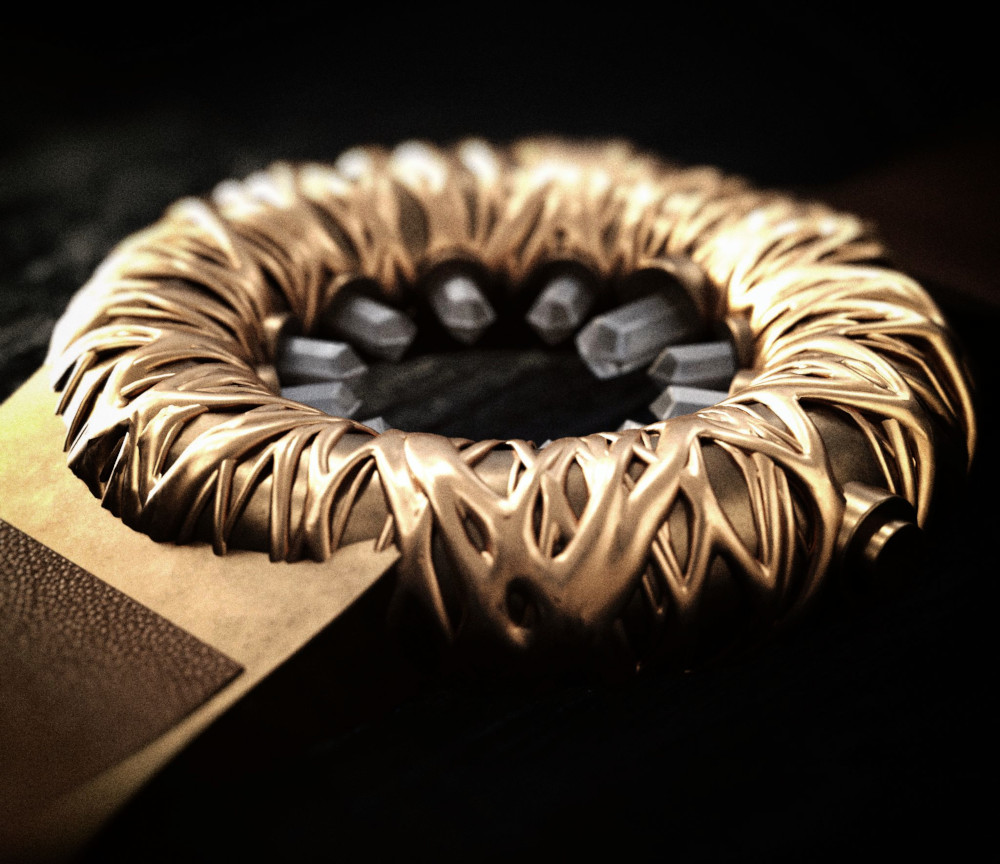
Leave a Reply